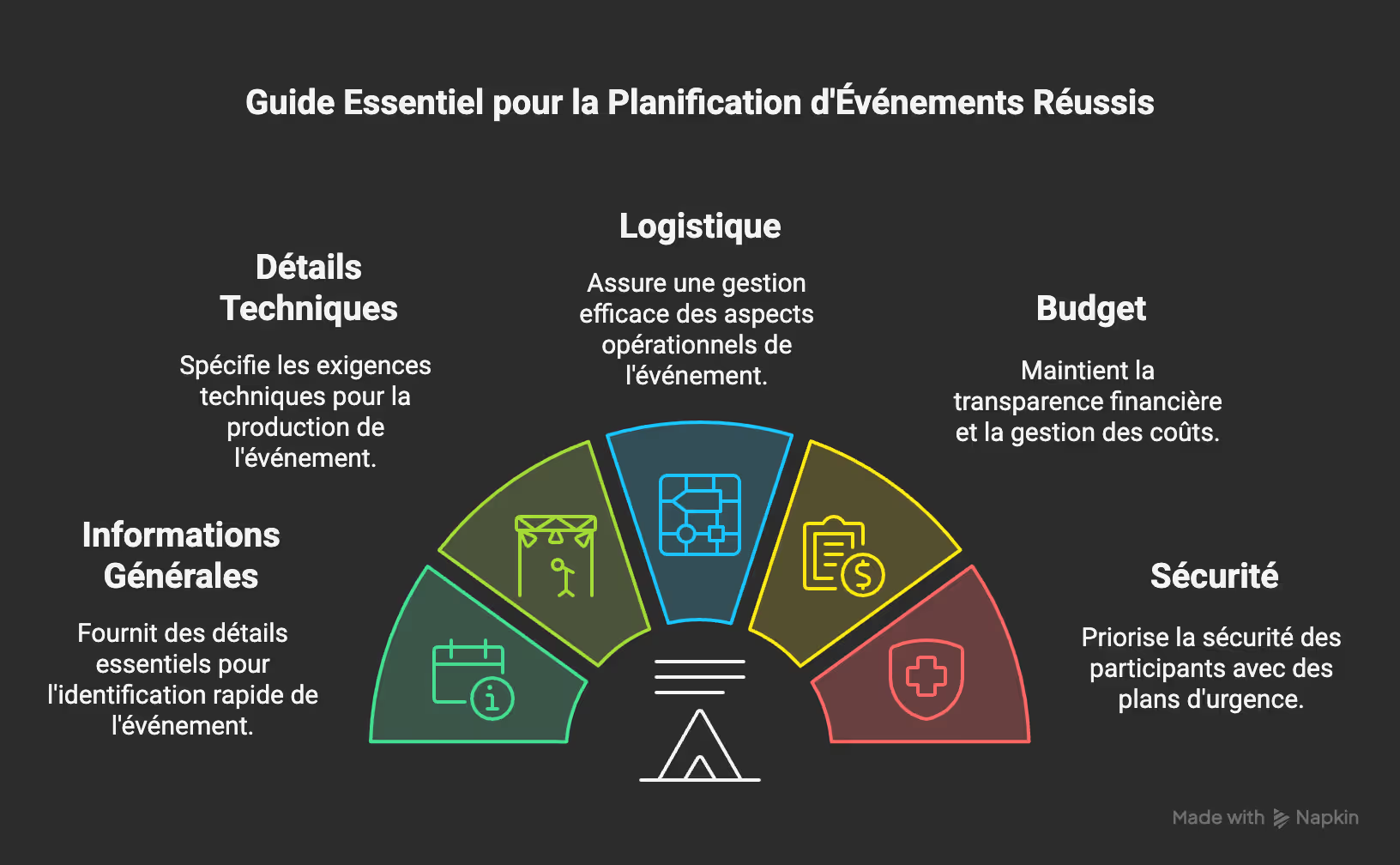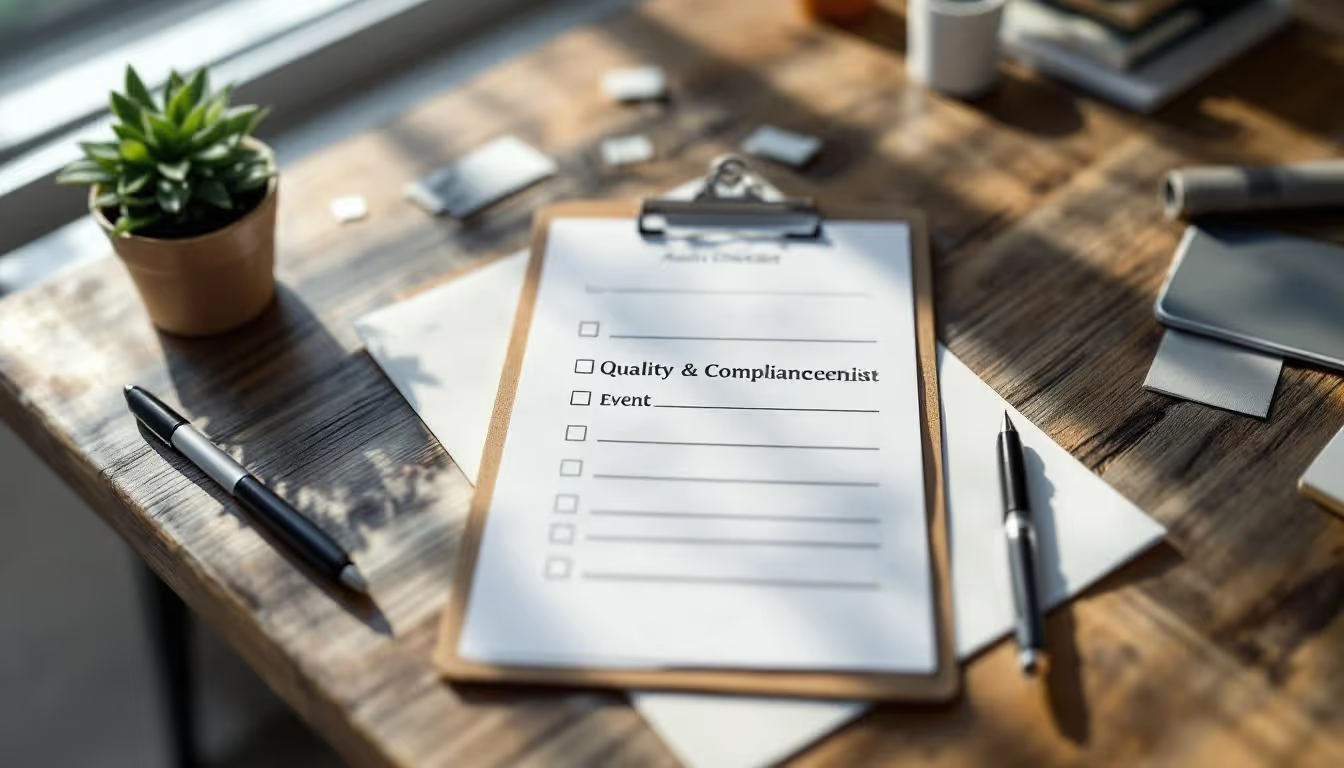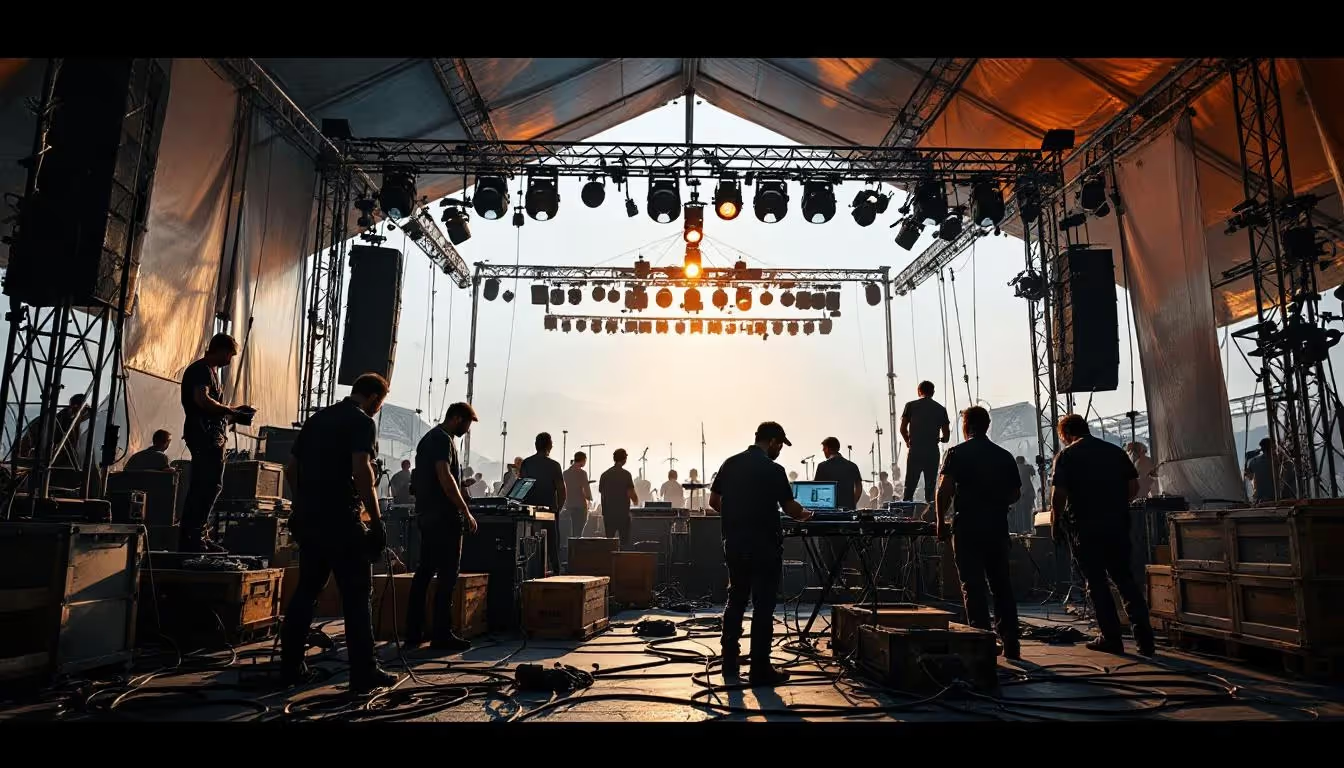Organizing an event without a technical rider is like going on an expedition without a map.
This important document centralizes all the practical and technical information to guarantee the smooth running of your event project.
A well-structured event technical rider facilitates communication between the various stakeholders and becomes a true steering tool, essential for the success of your professional events.
What is an event technical rider and what is it used for?
An event technical rider is a document that details all the technical and logistical aspects necessary for the realization of an event project. It serves as a practical guide to coordinate the various stakeholders.
The technical rider greatly facilitates event management by centralizing all the important information. It helps anticipate technical problems such as a lack of electrical outlets or insufficient sound power. In addition, it improves communication between teams by providing a common language and precise data. It also simplifies planning by providing a detailed framework for the organization.
Without a technical rider, a professional event risks encountering many errors and coordination problems.
The important elements of an event technical rider
Any event technical rider must contain certain basic elements to be truly useful. I will quickly list the information to plan for so that the team can work well, and to master to guarantee the success of your event.
Here are the indispensable components of an effective event technical rider.
- General information: Name, date, location, and key organizational contacts.
- Technical details: Audio, video, lighting, and stage equipment requirements.
- Logistics: Supplier access, setup schedules, and traffic flow plans.
- Budget: Equipment rental costs, service fees, and contingency funds.
- Security: Evacuation plans, instructions, and safety equipment.

For a trade show, you will focus on exhibitor spaces and electrical connections, whereas for a conference, it will be more about projection equipment and sound systems.
For a concert, we will detail everything related to sound, lighting, and artist requirements.
The target audience also influences the content, especially for security and accessibility depending on the age of the participants.
Accurate information prevents errors and facilitates coordination between all stakeholders.
How to create an effective event technical rider
To create a good event technical rider, you need to follow a few basic steps to avoid forgetting anything.
I advise you to start by gathering all the important information for your event, by talking to the teams and service providers involved. Then, organize this data by theme (technical, logistical, security) to make it easy to consult.
To be truly useful, the rider must be circulated to all stakeholders and ensure that everyone understands their role. Also, consider providing a document that can be easily adapted to unforeseen circumstances.
Here are some best practices for writing an effective and clear event technical rider.
- Collection: Gather all relevant data from the teams.
- Clarity: Write each section concisely and precisely.
- Verification: Ensure the comprehensiveness of the information provided.
- Update: Regularly update the technical specifications.
Practical applications of technical specifications in event management
The role of technical specifications in event management
The technical specifications serve as a quick reference on site for all teams. It allows everyone to check technical information and schedules during the course of activities.
During the event, the technical specifications help us quickly resolve any issues that arise. For example, if a service provider can't find their designated location, we can refer directly to the plan included in the technical specifications.
In the event of a last-minute schedule change, everyone can consult the same document to understand the new flow. If there is a problem with equipment, the contact list allows us to directly call the right person for troubleshooting.
This really avoids confusion when several stakeholders are involved in the same project.
The technical specifications as a communication tool with service providers
The technical specifications clarify what is expected of the service providers for the event.
We need to adapt the information according to the type of service provider concerned. For sound technicians, we specify the number of microphones, the type of console, and the necessary power. For the event technical service provider, we detail all the needs in specialized equipment.
For catering teams, indicate the number of meals, dietary restrictions, and service times. The sheet also serves as an essential tool for the event technical director, who must coordinate all these technical aspects for the successful execution of the event.
A standardized format enhances our credibility with external stakeholders.
Evaluation and continuous improvement through the technical sheet
The technical sheet helps us evaluate whether the event went according to the initial plan. We can easily identify discrepancies between what was planned and what actually happened. If certain technical elements posed a problem, we note them so as not to repeat the same mistakes.
The sheet thus becomes a learning document that helps us progress in our event organization.
After each use, we improve our technical sheet template. We can add columns for feedback or create a dedicated section for areas of improvement. We also ask the different teams what they felt was missing from the document.
For example, if the technicians tell us that they would have needed more details on the electrical connections, we will add it to the next template.
It's a process that evolves with field experience.
The event technical specifications remain the central tool for transforming an idea into a successful project. It ensures seamless communication between all stakeholders and allows you to anticipate problems before they arise.
By adopting this structured approach in your event organization, you gain efficiency and peace of mind throughout the planning process.
.avif)



